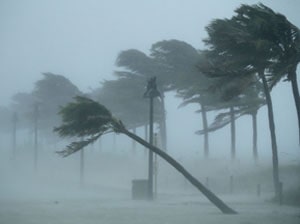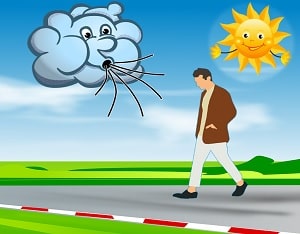English Documentary on Hurricanes with Transcript and illustrated flashcards and vocabulary items to improve your reading and listening comprehension and expand your scientific and academic vocabulary Source of documentary: National Geographic YouTube Channel https://www.youtube.com/watch?v=LlXVikDkyTg An unpredictable storm Cyclone, typhoon, hurricane, all of these names are used around the world to describe the most powerful storm known to man. Hurricanes are unpredictable, but scientists have a thorough understanding of how hurricanes form and sustain their power. How hurricanes are formed In the Atlantic Ocean, hurricane season peaks during the late summer months when tropical waters are the warmest. Hurricanes form from a cluster ...
Home » English Documentaries with Transcript » English Documentary on Hurricanes with Transcript & Flashcards

English Documentary on Hurricanes with Transcript & Flashcards
Updated: by Nastaran Sepid
Time to Read: 3 minutes | 383 Views | 8 Comments on English Documentary on Hurricanes with Transcript & Flashcards



Actually I was pretty much curious and confused that what is the difference between hurricane and tornado.and we actually have an tornado in Jupiter for so many lung time.
Feedback
1. we actually have an tornado in Jupiter for so many lung time = we’ve actually had / seen a tornado on Jupiter for such a long time
I have seen hurricanes just in the movies and not in real life. It seems really scary. I really don’t like to experience it; But it is interesting to know about it.
Thanks for your comment.
Feedback
1. Usually in English, we regard these words or phenomena as ‘plural’. So, I rewrite your comment in this way:
they seem really scary
it’s interesting to know about them
Although nature is peaceful and magnificent, it can also be very horrifying and destructive too.
I have seen a few small hurricanes in my life but never a fatal one. It must be truly terrifying.
Thanks for your comment.
Feedback
1. The use of “too” and “also” in one single sentence is redundant.
An unpredictable storm
Cyclone, typhoon, hurricane, all of these names are used around the world to describe the most powerful storm known to man. Hurricanes are unpredictable but scientists have a thorough understanding of how hurricanes form and sustain their power.
How hurricane is formed
In the Atlantic Ocean, hurricane season peaks during the late summer months when tropical waters are the warmest. Hurricanes form from a cluster of thunderstorms that suck up the warms most air and move it high into Earth’s atmosphere. The warm air is the converted into energy that powers the hurricane’s circular winds. These winds spin around a low-pressure center called the eye. Which can provide a 20 to 30-mile radius of eerie calm. Encircling it is the eye wall, a towering ring of clouds with some of the fastest winds-speeds of their hurricane. Surrounding the eye wall are curved bands clouds. The rain-band, often tens of miles wide releasing sheets of rain and sometimes tornados. When a tropical storm’s winds reach at least 74 miles per hour, it becomes a hurricane. The hurricane then receives the category ranking of one to five on its wind speed and potential damage. but wind speed isn’t always the most dangerous component when hurricanes come near land. It’s storm urge.
What storm urge is
Storm urge is caused when winds from an approaching hurricane push water towards the shoreline up to 20 Feet above sea level and can extend 100 miles. 90% of all hurricane deaths are the result of storm surge.
Hurricanes can also be beneficial
While hurricanes can cause mass of devastation, just like other natural disasters, they serve a higher purpose within the global ecosystem. Hurricanes help regulate our climate by moving heat energy from the equator to the poles keeping the Earth’s temperature stable. Over time, science has helped us to better understand hurricanes and predict their paths. Saving lives through early warning systems and helping us build better infrastructure to protect your cities. The more we study these complex storms, the better we can prepare for them and minimize their impact on human lives.
Thanks for your transcription.
You’ve made the following mistakes, which are much more than the max number of 3 errors:
1. warms most air – warm moist air
2. The warm air is the converted -> then converted
3. the eye. Which can –> the eye, which can
4. category ranking of one to five on its wind speed -> on the Safirr-Simpson Scale …
5. storm urge –> storm surge
6. mass of devastation -> mass devastation
7. protect your cities -> … our cities
I wonder if you use any software program to transcribe sounds automatically. If so, you need to proofread the final version of your task before hitting the “Post Comment” button.
If you find some words too technical or scientific, you can always turn on cc on YouTube.